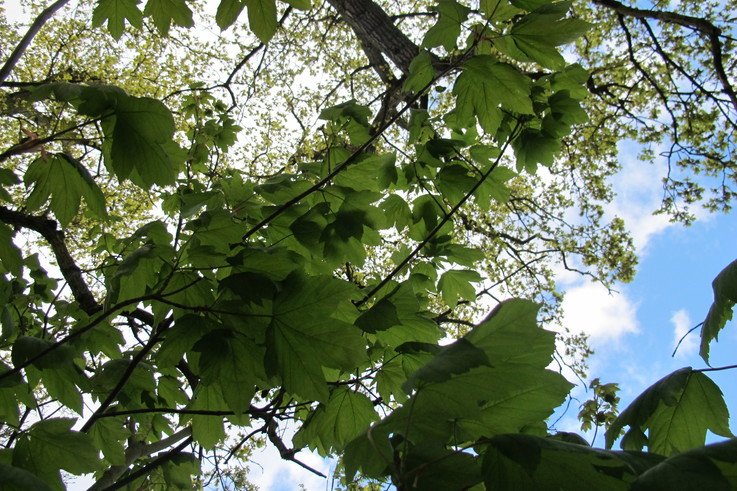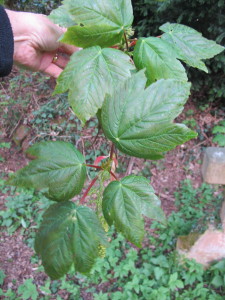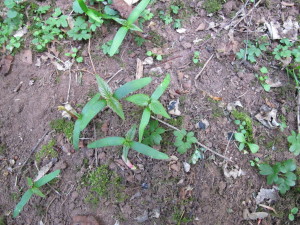Sycamore Poisoning in Horses - Equine Atypical Myopathy

Equine Atypical Myopathy, EAM, is also known as "Sycamore poisoning" in horses. EAM is a potentially fatal disease of horses caused by the horse eating young Sycamore seedlings, or in the autumn, the seeds themselves.
A study published in 2013 in the Equine vetinary Journal showed that toxins from the Sycamore, Acer pseudoplatanus, are the likely cause. The research was done by the University of Leige and involved 17 horses from Belgium, Germany and The Netherlands. EAM is caused by high levels of the toxin Hypoglycin A.
Symptoms
The toxin operates by preventing energy being produced in muscle cells resulting in muscle damage, particularly in the muscles that enable the horse to stand, the muscles that support the lungs and the heart muscle, producing a range of symptoms including:
Picture right :- Mature, palmate leaves of Sycamore with red stems and familiar five lobed leaves.
• Red or brown urine
• Fast, irregular heart beat
• Reluctance to work
• Weakness and lethargy
• Stiffness
• Soreness
• Muscle tremors
• Fast, labored breathing
• Whinnying
• Head tossing or low head carriage
• Sudden death
CONTACT A VET IMMEDIATELY IF YOU THINK YOUR HORSE IS SHOWING SIGNS OF EQUINE ATYPICAL MYOPATHY.
Some horses may be more susceptible than others. The amount of Hypoglycin A within the seeds/seedlings varies and it isn't known what sort of quantity of seeds or seedlings would need to be ingested for the horse to be ill. Older horses tend not to be susceptible which fosters the suggestion that there may be some type of acquired immunity.
A vet may be able to diagnose EAM from a clinical examination, on the basis of grazing and the presence of red or brown urine which is a strong indication.
Prevention

Identify if the parent trees are present, Sycamore has become very well established because it grows very rapidly and produces a large amount of keys 'seeds' each year. The seeds can travel more than a 100 metres because of their ability to fall slowly in a 'helicopter' motion. The first few pairs of leaves contain large quantities of Hypoglycin A, by the to the fourth pair of leaves emerge levels of the toxin are falling.
Picture left :- Young seedlings with unlobed seed leaves and the first pair of true leaves, with a narrower leaf than the mature leaves.

Check to find seedlings; walk the paddocks to see if this might be a potential problem.
Small numbers can be pulled by hand. Larger numbers can be controlled with the application of Grazon Pro Paddock Weedkiller.
It may be worth considering long term control by felling and removing the parent plants. Using Ecoplug Max can be used to kill the roots and prevent suckering.
